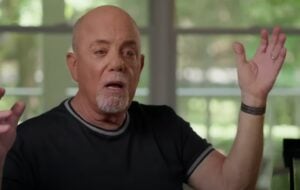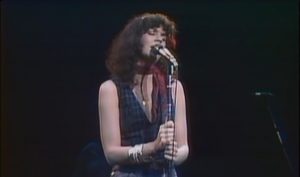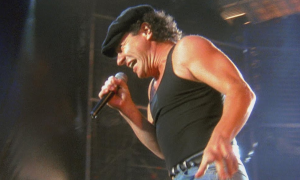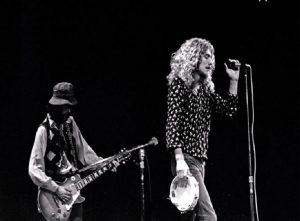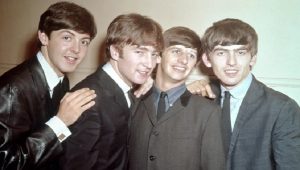The Songs Jimi Hendrix Took To The Afterlife
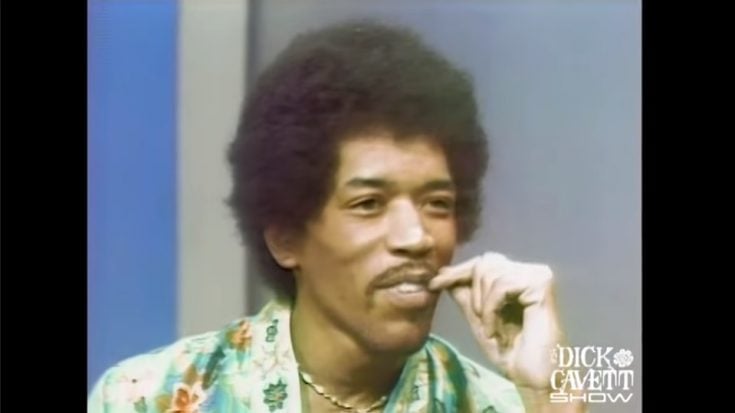
Jimi Hendrix at the Dick Cavett Show - Youtube
Jimi Hendrix seemed to have been born into a stardom that would blaze brightly for a little period of time before fading away. Due to his extraordinary talent, the then-17-year-old prodigy was abruptly fired by his bandmates mid-performance on February 20, 1959, because they couldn’t match his level of virtuosity. Years passed while he struggled to achieve success.
Hendrix’s life eventually turned around on July 5, 1966, when he met Chas Chandler at the Cafe Wha. This meeting elevated both guys to previously unheard-of levels. It’s interesting to note that fashion model Linda Keith was the key to all of this. The Animals bassist was convinced by Keith to visit Greenwich Village and see the young guitarist who was all the rage.
In an interview with The Guardian, the model reflected on her first encounter with Jimi Hendrix and said, “It was so clear to me. I couldn’t believe nobody had picked up on him before because he’d obviously been around. He was astonishing – the moods he could bring to music, his charisma, his skill and stage presence. Yet nobody was leaping about with excitement. I couldn’t believe it.”
Unfortunately, Hendrix would pass away too soon, only four years after that crucial night. He had a limited time to produce music and art, so sadly, many of his passionate ideals were never realized. Some of the most unfortunate losses from this short time period are listed here.
A dream collaboration with Frank Zappa
Hendrix lived at George Frideric Handel’s former London palace and was a great admirer of the Baroque composer. Though he and the avant-garde musician Frank Zappa were separated by a different approach to classical guitar playing, that didn’t stop the latter from wanting to help his fellow genius guitarist.
Zappa had a brilliant idea that was inspired by this difference. In a conversation, Zappa said, “I had written in articles at that time. that I thought what should be done, seeing that he wasn’t musically literate and he couldn’t write it down himself, that he be put in some sort of working relationship with someone who could write his ideas and have them scored for instruments other than the electrical guitar.”
Zappa went on to express, “I think that would’ve been something worthwhile to do, but no, he was too busy doing other things to sit down and take that approach.”
Unfortunately, Hendrix passed away before the realization of this orchestral vision. Zappa straightforwardly remarked, “I knew Jimi, and I think the best thing you could say about Jimi was: there was a person who shouldn’t use drugs.”
A unique supergroup with Paul McCartney and Miles Davis
The first three-piece collaboration that Hendrix had in mind was a partnership with tow iconic musicians.
The selected collaborators were Miles Davis, a jazz legend who led the genre into rock, and Paul McCartney, a constant hero of Hendrix’s thanks to his elaborate orchestration. Hendrix had, in true unplanned fashion, tried to get McCartney involved in a musical endeavor back in 1969.
Within that week, Hendrix sent a telegram to The Beatles’ headquarters that said, “We are recording an LP together this weekend. How about coming in to play bass stop call Alan Douglas 212-5812212. Peace Jimi Hendrix, Miles Davis, Tony Williams.”
Sadly, McCartney was on vacation at the time, so it’s unclear if he even got the message. However, one can understand McCartney’s intense interest given his admiration for Hendrix as the best guitarist in history, particularly given how well his composing skills would complement the virtuosity of the imagined trio.
And another almost-band with Arthur Lee and Steve Winwood
Regrettably, Hendrix’s attempt to create a supergroup was not one-time. On a different occasion, he sent out invitations to English R&B virtuoso Steve Winwood and Love’s lyricist Arthur Lee, who was then a member of Traffic among other well-known artists.
“Jimi was an acquaintance of mine, but he was a friend of Arthur’s,” Love’s Johnny Echols reportedly said to Mojo.
Echols went on to clarify, “After Love had disbanded, Jimi and Arthur collaborated once more, recording three tracks at London’s Olympic Studios in March ’70. They entertained the idea of assembling a supergroup with Steve Winwood as the vocalist, Buddy Miles on drums, and several other musicians.”
Unfortunately, this imagined supergroup did not come to fruition. “It never progressed beyond discussions as Jimi tragically passed away,” Love’s guitarist concluded.
A rock sci-fi opera movie that Hendrix wrote a script about
Hendrix, a science fiction fanatic, turned his love of the genre into a script called “Moondust” that told the tale of his early experience with a UFO, which he and his brother Leon saw in their former Washington state residence. And being a Flash Gordon fan, the guitarist was especially drawn to this sci-fi encounter.
Written by hand between 1969 and 1970, it developed into a rock opera that combined alien encounters with the powerful effects of rock ‘n’ roll music. “Moondust” promised a distinctive cinematic experience. Hendrix’s creative imagination was explored in the screenplay, which included scenes in which an “innocent little girl” hears a rock band and envisions dragons and other mysterious creatures engaged in aerial combat.
The voyage, which took place across 38 pages, passed through enigmatic pastures, tents in Arabia with mystical connections, and other heavenly advancements. Regretfully, Hendrix died before completing his ambitious vision.
Despite this, “Moondust” gives an insight into Hendrix’s naiveté and spirit of adventure, giving his rock character some depth that is sometimes lacking from the dramatic stories surrounding his turbulent past.




